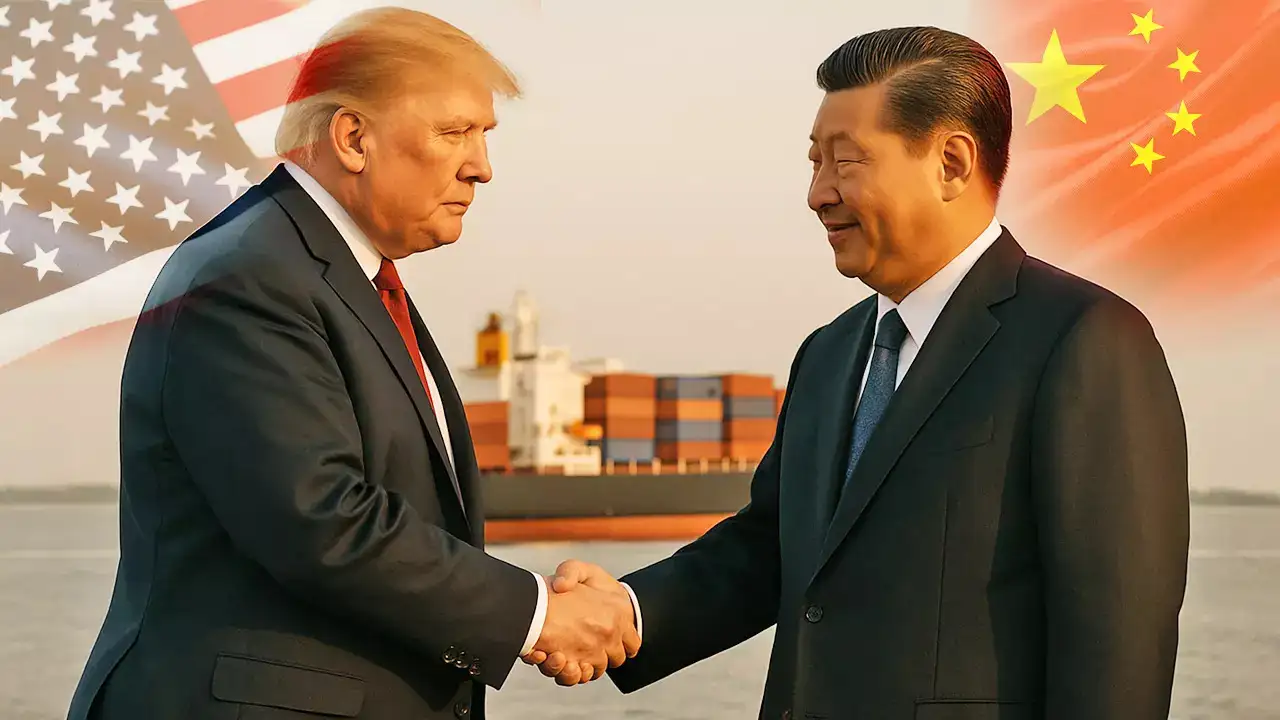Can a US-China Agreement Undermine India’s Manufacturing Aspirations?

Apple is making a significant shift in its production strategy by relocating most of its iPhone manufacturing for the US market from China to India. This move comes at a time when India is striving to establish itself as a global manufacturing hub. However, recent developments in US-China trade relations, including a reduction in tariffs, may complicate India’s ambitions. Analysts express concerns that this trade “reset” could hinder the flow of manufacturing investments to India, potentially reversing the progress made in recent months.
Impact of US-China Trade Relations
The recent agreement between the US and China to lower tariffs on goods traded between the two nations has raised concerns in India. Ajay Srivastava from the Global Trade Research Institute warns that the shift of manufacturing investment from China to India could stall or even reverse. While India’s assembly lines may continue to operate, the potential for value-added growth is at risk. This change in sentiment contrasts sharply with the optimism that surrounded Apple’s announcement last month regarding its production shift to India. Despite US President Donald Trump’s advice to Apple CEO Tim Cook against building in India due to high tariffs, some experts believe India is still well-positioned to serve as an alternative supplier to the US.
India’s Manufacturing Landscape
India’s manufacturing sector has shown signs of growth, with new export orders reaching a 14-year high. Reports indicate that Indian exporters are stepping in to fill the void left by Chinese manufacturers. Nomura, a Japanese brokerage, highlights anecdotal evidence suggesting that India is benefiting from trade diversions and supply chain shifts, particularly in electronics, textiles, and toys. However, analysts caution that while the current trade dynamics may favor India, the country must address several challenges to fully capitalize on these opportunities.
The Indian government, under Prime Minister Narendra Modi, is actively pursuing foreign investments and negotiating trade deals that could enhance India’s position in the global market. Recent trade agreements, such as the one with the UK, demonstrate India’s willingness to reduce tariffs in key sectors. However, experts emphasize that India must implement significant reforms to improve the ease of doing business to attract more foreign investment.
Challenges Ahead for India
Despite the optimism surrounding India’s manufacturing potential, several challenges remain. Analysts point out that India’s reliance on China for raw materials and components limits its ability to fully benefit from supply chain shifts. Currently, Apple earns significantly more from each iPhone sold in the US compared to what India retains from its assembly operations. For India to increase its share of earnings, more components must be manufactured locally, rather than merely assembling products.
Moreover, the quality of jobs created through assembly lines has been a concern. Unlike previous manufacturing setups, current smartphone manufacturers often import parts instead of building local supply chains. This approach raises questions about the long-term sustainability of India’s manufacturing growth. Additionally, there are fears that Chinese exporters may exploit India’s market to reroute products to the US, which could undermine India’s efforts to develop its own industrial base.
Looking to the Future
As India navigates these complexities, experts urge policymakers to focus on improving production costs, logistics, and regulatory certainty. The recent US-China trade reset is viewed as a temporary measure rather than a long-term solution. To avoid being sidelined in the global manufacturing landscape, India must adopt a strategic approach and play the long game. The path ahead requires not only attracting foreign investment but also fostering local capabilities to ensure sustainable growth in the manufacturing sector.
Observer Voice is the one stop site for National, International news, Sports, Editor’s Choice, Art/culture contents, Quotes and much more. We also cover historical contents. Historical contents includes World History, Indian History, and what happened today. The website also covers Entertainment across the India and World.

